A while ago I reviewed two LED spot lights for recessed fixtures. With the recent excellent article in QST about the emissions of today’s models, I decided to revisit the topic.
I am slowly changing my lamps to LED. I buy one model at a time and test them for RF emissions. This time my target lamps were the BR30 ceiling fixture floods in my TV room which have a dimmer control. I also have a three lamp fixture in my ham shack/office plus one ceiling fixture directly over the desk.
So off to the local home center to purchase four Phillips 730 lumen, 13 watt, dimmable, BR30 size LED flood lights.
The Phillips 65 watt equiv. flood light
My past tests and the QST article reveal LED products from Phillips include sufficient filtering in the RF domain to be compatible with the typical ham home. So I purchased the following model…
The next figures compare the 13 watt LED BR30 shape with a typical 65 watt incandescent model. First is a view from the side…
…then from the front…
They are pretty much the same. The LED should fit into any 30 diameter (30 * 1/8″ = 3.75 inch) fixture with ease.
I’ve mentioned before the LED lights are quite a bit heavier than their incandescent counterparts. This example is no exception. My light fixtures accepted them, but the extra weight does cause some sideways “swing” motion such that the lights touch the side.
RF Interference
The author of the excellent QST article went to great lengths to get accurate emission measurements over frequency. For my quick and simple tests, I use my trusty Grundig receiver. I wave my receiver past the LED lights in AM broadcast, shortwave and FM broadcast bands. My experience with LED lights is if they interfere with radios, they do so in the FM band. I have a couple (non Phillips) LED bulbs in table lamps that wipe out FM reception in the same room as the lamp.
I delight in saying Phillips has an excellent reputation so far in my tests.
I can and have replaced all my ham shack lighting with these LED flood lights with no interference issues.
Brightness check
My original goal was to replace the ceiling fixtures with four LED models. The TV room has these four fixtures fed power through a dimmer switch. I decided to see how the LED lamps react to dimming compared with the incandescent lamps. I set my camera to a fixed exposure and took several photographs.
The first three photos are the original four incandescent lamps at full, mid and low dimmer settings.
One nice thing about incandescent lights on dimmer circuits is the way their color temperature warms becoming more red as the intensity drops.
Next I replaced just one of the four ceiling fixtures with the LED to directly compare. Let’s see if we can find it.
I saw the LED light was a bit brighter than the incandescent lamps, but their close in intensity. They are certainly close enough to escape detection in the next photo.
The LED lamp is still a bit brighter visually, but is tracking the intensity of the others closely. Can anyone tell which one is the LED? The photo doesn’t tell us much. Let’s continue.
Ah ha… there it is. The one weakness of the dimmable LED lamps is they don’t change color as they dim like incandescent lamps. In my case, the LED light is quite a bit whiter and brighter than its romantic incandescent brethren. These dimmable LED lights work, but are probably not going to set the mood like a dark orange incandescent… know what I’m sayin’?
Conclusion
CFL lamps are no longer on my shopping list as I see LEDs as the future of lighting. My ham shack/office is a bright happy place with just a few dozen watts.
The Phillips floods didn’t work out for my TV room because of the dim white light, but they are perfect in my ham shack’s non-dimmer ceiling fixture. RFI is not a problem with every Phillips product so far so I’m happy to stay with them for my future needs. Someone at Phillips clearly cares about RFI.
If LED Light manufacturers make an XYL friendly LED light redden when it dims, I will replace my TV room ceiling lamps as well. Until then, incandescent lamps still have one place in my home.
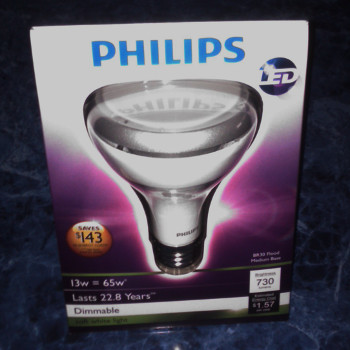
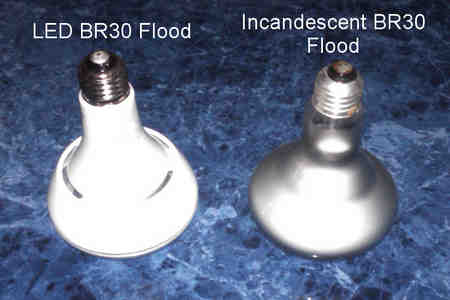
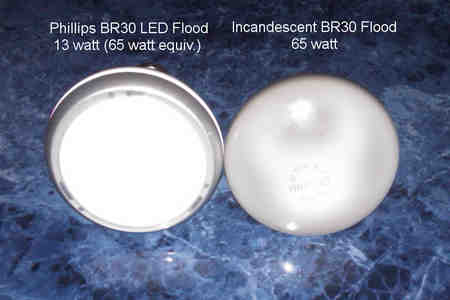
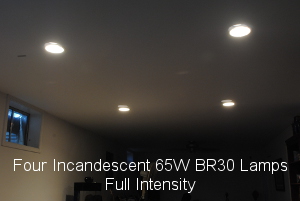
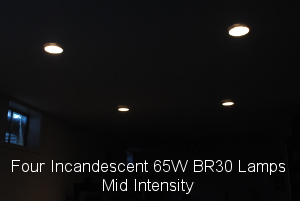
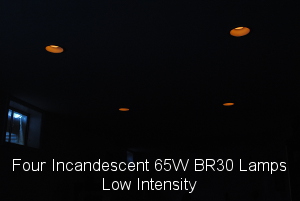
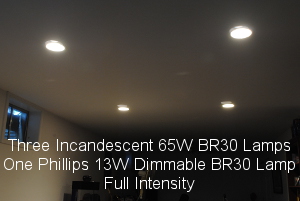
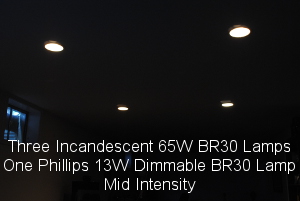
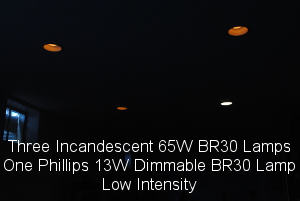
Thanks for the "real world" review on these.
73, Jim KQ6EA
Really very informative post here. Thanks